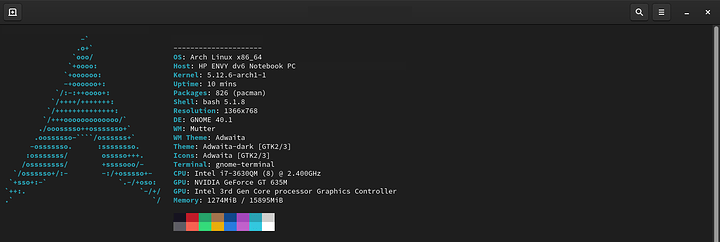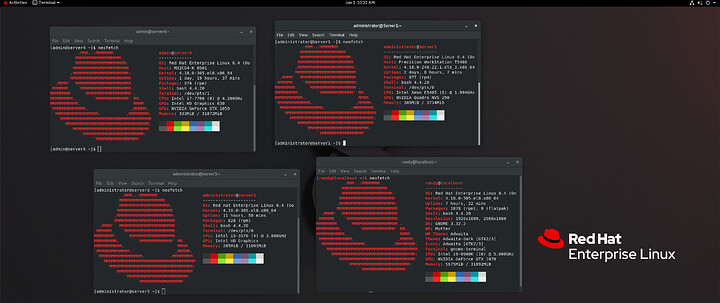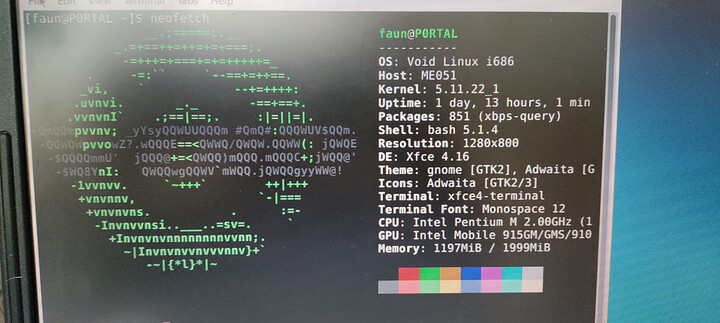New daily, used to be a i5 6600K 
I’m disappointed with the lack of FreeBSD flex! 
Here’s my general purpose server box that’s been around for the last 7 years.
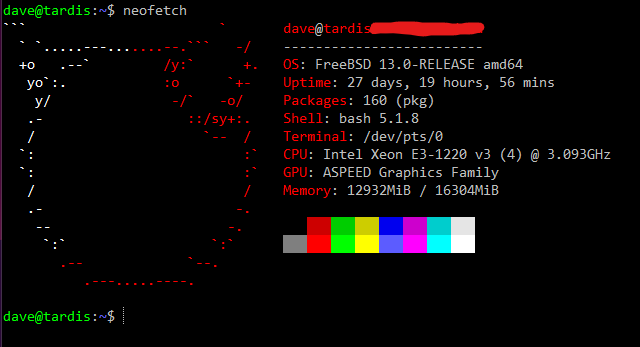
True. It appears the only other post featuring any *BSD is mine (and it’s just pfSense):
I want to setup a mail server on OpenBSD (for some reason, I just want to use OpenSMTPD instead of postfix), but that’s a project for another time. I will, of course, blog about it here when I do.
dat resolution doe
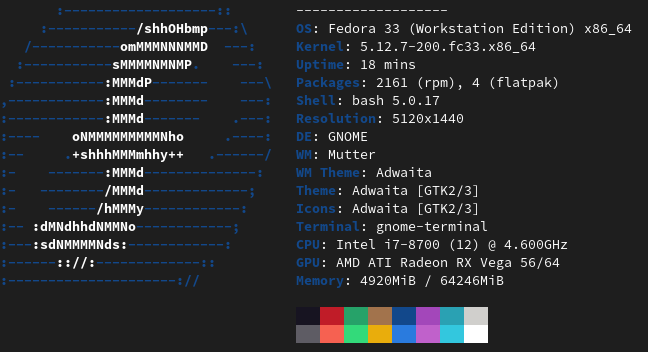
Well, I got a OpenBSD VM I’ve been poking at. Eventual idea is to first use it as a jump box with Wireguard and eventually use OpenBSD to entirely replace pfSense.
So here goes:
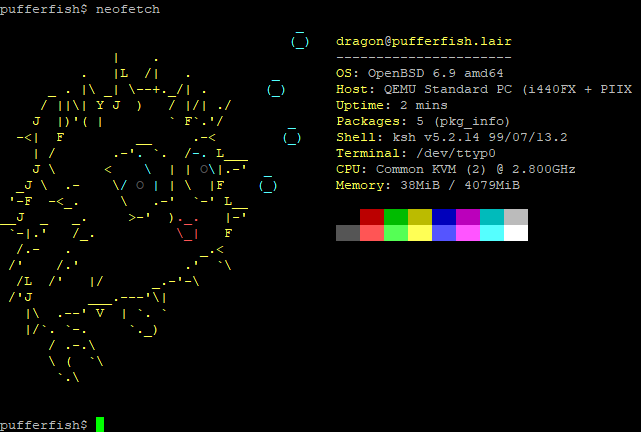
Going through the struggles of making it work 100%, I’m at 90%. Thanks to all the people that are following me in the small linux problem thread!
First venture into Arch Linux and it isn’t too bad.
I have to go this route too at some point. For now I have choosen the easy way, the Manjaro way.
I would suggest avoiding Gnome because I think it’s kinda bugged (it’s giving me issues with bluetooth toggling on and off, kinda weird) and the installer, as of now, is convenient but it’s a bit bugged too. You’ll need to generate the proper locale if you’re not in the US and setup manually wifi from scratch. Other than that it’s very nice to use if you don’t have to retrieve a bunch of old drivers from repos.
I am using Manjaro with Gnome and I feel you. Bluetooth is sometimes not turning back on if it was off or has been turned off.
I am getting used to the bleeding edge. With that I mean that you are not stuck with bugs until the next release, in say a year or so, but sometimes bugs get introduced with an update. Normally they get addressed fast. but It all has its ups and downs.
Sometimes is too much bleed haha
Also being a rolling release with delta updates makes it very much worth for me since I’m not using that laptop often anymore.
that light theme tho
Over the years I switched from pfSense to OPNSense to IPFire to VyOS to bare Linux - and around and around I went. Last year I moved my home edge router to OpenBSD and didn’t look back. It’s extremely easy to configure and administer, and is absolutely rock solid in a way that makes Linux look like a joke.
I’m saying that as a huge Linux fan, having used it for 20 years now, and it’s still my primary desktop OS at home. OpenBSD is just a whole new level of stable, especially under load and when it comes to updates etc. The OpenBSD FAQ guides you through making a router, and if you want to see my dot files (dhcpd, dhclient, network interfaces, sshguard, pf.conf etc) just holler and I’ll put them in a git for you.
OpenBSD has WireGuard in kernel, like Linux does, and the module was written with the help of Jason (Donenfeld). It was done properly and securely and integrated fully with the base system cough FreeBSD cough. While I run Threadripper on Linux for my main desktop, here’s my router to keep with the theme of my reply:
The domain in the header is my own real home domain (SSH, WireGuard, Plex, Emby, Sonarr, Transmission, Docker stuff etc). The router stats page (traffic, bandwidth, firewall stats etc) can be seen at the link in the screenshot (minus the ‘root@’).
Edit: PS if you issue clear; neofetch instead of just neofetch, the screen is cleared before rendering the output, making for a tidier result. Just in case you didn’t know. That works on Linux and macOS too.
Dang son, 91 packages? I guess for an appliance, but that’s pretty slim…
I see mirelurk has 5 in the vm, but that’s not real
Heh… I have a lot of extra packages installed on top of base to make it to 91 packages. Stuff like vnstat, vnstati, pfstat, unbound, sshguard, iperf3, git, nano, zsh, and of course neofetch… All kinds of extras. The real base install is a lot smaller than that, and still has everything you need (including httpd web server, relayd, proxy, etc).
The >60MB RAM usage includes the full firewall, DNS server, DHCP server, SSH server, web server, proxy, SSL, SSH, all routing, NAT, and a country blocker. The blocker is running a script every boot to grab/refresh a list of all IPv4 IPs by country, to load block tables into memory for the pf firewall. This basically stops (most of) our friends in China, Russia, Thailand, Romania etc from accessing the SSH and web server logins. At least 15MB of that RAM usage is just my block table sitting in memory. Base was about 35MB RAM usage iirc.
OpenBSD rocks!
That CPU used to be my main PC, but just recently installed proxmox on that (didn’t take neofetches yet) and added it to my Cluster. I have 1 more PC to add to the cluster. I always thought about switching from pfSense to OpenBSD, but I’m a *BSD noob. Do you happen to have some guides on OpenBSD mail hosting (OpenSMTPD)?
Cool flex.
Biky,
Here follows the OpenSMTPD guide I consider to be the best out there:
Best regards,
vhns
You are running a VM on ChromeOS is that right?

